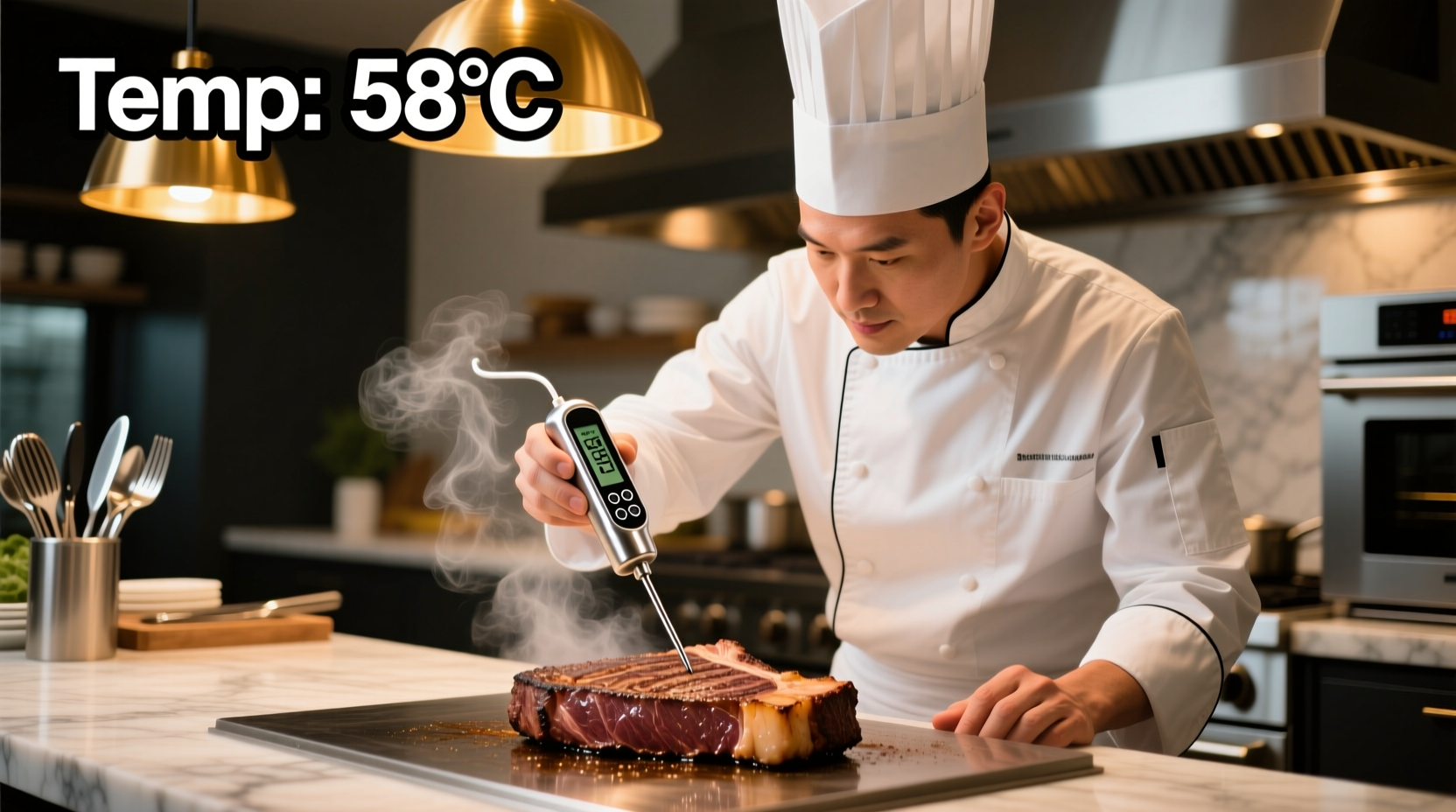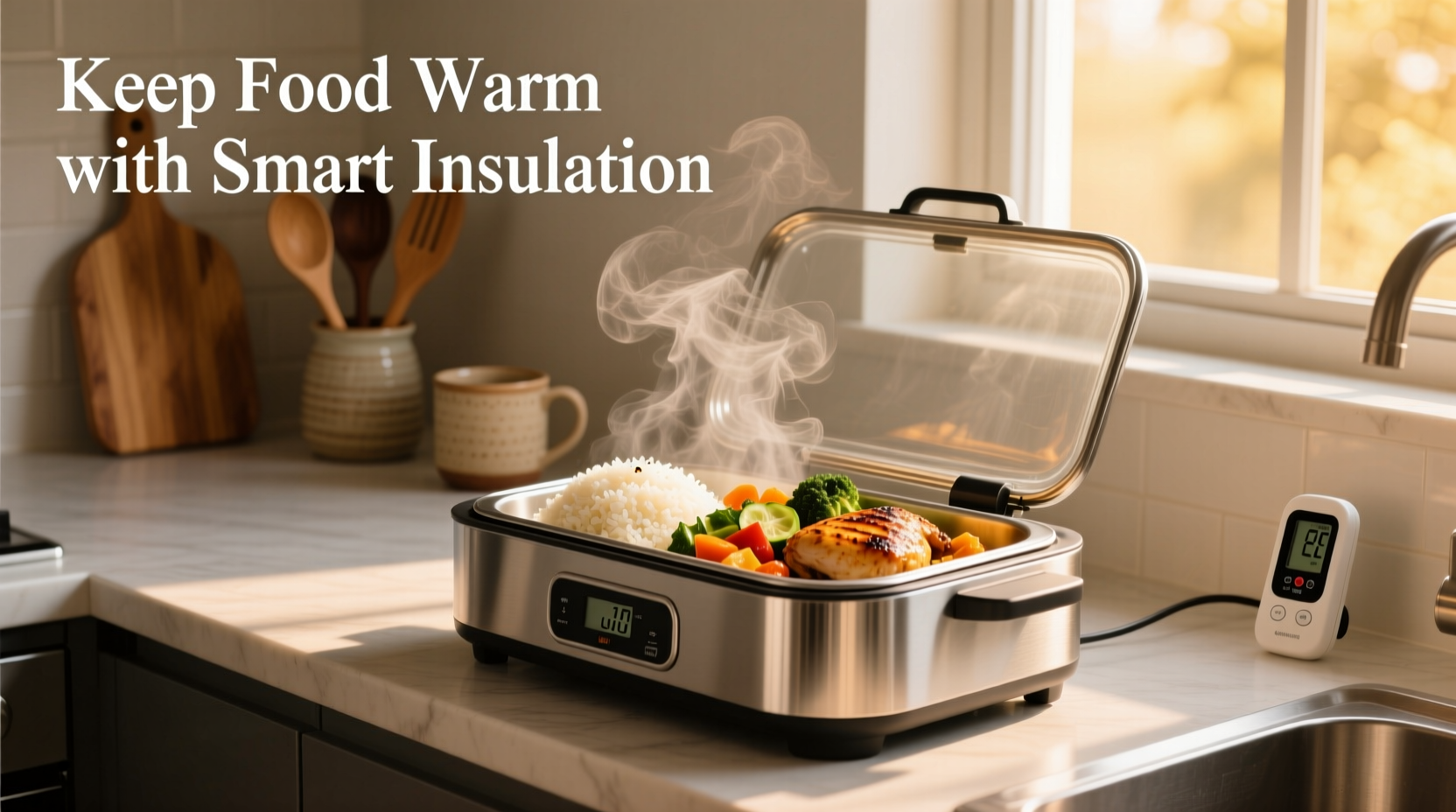Why Proper Food Warming Matters for Quality and Safety
Keeping food at the right temperature isn't just about comfort—it's critical for both food safety and quality preservation. When food drops below 140°F (60°C), it enters the "danger zone" where bacteria multiply rapidly. But overheating causes moisture loss and texture degradation. The ideal balance maintains food between 140-165°F (60-74°C), preserving both safety and quality.
Food Safety Temperature Guidelines: The Critical Baseline
Before exploring warming techniques, understand these essential food safety parameters established by the USDA Food Safety and Inspection Service:
| Temperature Range | Time Limit | Food Safety Status |
|---|---|---|
| Above 140°F (60°C) | Up to 2-4 hours | Safe for consumption |
| 125-140°F (52-60°C) | Maximum 1 hour | Risk of bacterial growth |
| 40-125°F (4-52°C) | Maximum 2 hours | Danger zone - discard after timeframe |
| Below 40°F (4°C) | Varies by food type | Safe for refrigeration |
Source: USDA Food Safety and Inspection Service
Practical Warming Solutions Organized by Your Cooking Journey
During Food Preparation: Maintaining Heat Before Serving
Many home cooks make the mistake of letting food cool while finishing other dishes. Here's how to maintain optimal temperature during your cooking process:
- Oven holding technique: Set your oven to its lowest setting (usually 170-200°F/77-93°C) and place cooked dishes inside. Keep food covered with foil to prevent drying. This method works exceptionally well for keeping multiple dishes warm simultaneously before serving.
- Double boiler method: For sauces and delicate foods, maintain gentle heat by placing the serving dish over a pot of barely simmering water. This prevents scorching while keeping food at serving temperature.
- Pre-warmed plates: Place serving dishes in a low-temperature oven (140°F/60°C) for 10-15 minutes before plating. This simple step prevents immediate cooling when food is served.

Transporting Food: Keeping Dishes Warm During Transit
Whether taking a dish to a potluck or delivering meals, these proven methods maintain safe temperatures:
- Insulated container system: Wrap food containers in aluminum foil, then place them in an insulated bag or cooler with preheated heat packs. For longer trips, use reusable heat packs heated in boiling water for 10 minutes.
- Towel wrapping technique: For short trips (under 30 minutes), wrap foil-covered dishes in thick kitchen towels. The towels provide insulation while absorbing excess moisture that could make food soggy.
- Car seat warming method: When traveling by car, place food containers on the passenger seat with the seat warmer on low. This gentle bottom heat helps maintain temperature without overheating.
Serving Food: Maintaining Temperature During Events
For potlucks, dinner parties, or catering events, these approaches keep food at optimal temperature throughout service:
- Chafing dish setup: Use commercial chafing dishes with water between the food pan and heat source. The water creates gentle, even heat that prevents scorching while maintaining safe temperatures for hours.
- Slow cooker adaptation: For casual gatherings, keep slow cookers on "warm" setting with the lid on. Add a small amount of liquid to prevent drying, and check temperature periodically with a food thermometer.
- DIY warming tray: Place serving dishes on a baking sheet lined with heating pads set to low, covered with a clean towel. This creates gentle bottom heat that maintains temperature without direct contact.
Advanced Techniques for Professional Results at Home
These methods require slightly more preparation but deliver restaurant-quality results for keeping food warm without compromising quality:
The Thermal Cooker Method
Thermal cookers (like vacuum-insulated pots) use retained heat technology. Bring food to proper temperature, then transfer to the preheated thermal container where it continues cooking gently while maintaining safe temperatures for 4-6 hours. This method works exceptionally well for soups, stews, and braised dishes.
Moisture Management System
One common problem when keeping food warm is moisture loss. Combat this by:
- Placing a damp (not wet) paper towel over food before covering
- Adding a small amount of broth or water to the bottom of serving dishes
- Using vented lids that allow minimal steam escape while maintaining temperature
What Doesn't Work (And Could Be Dangerous)
Avoid these common misconceptions about keeping food warm:
- Turning oven off with food inside: Temperature drops too quickly, creating perfect conditions for bacterial growth.
- Using warming settings on non-commercial equipment: Many slow cookers and warming trays don't maintain temperatures above 140°F (60°C) consistently.
- Wrapping in multiple layers of plastic: Creates condensation that makes food soggy and can leach chemicals into food.
Energy-Efficient Warming Options Compared
Different warming methods have varying energy costs. Here's how common approaches compare for keeping food warm for 2 hours:
| Method | Energy Cost (approx.) | Temperature Stability | Best For |
|---|---|---|---|
| Standard oven | $0.30-0.50 | Moderate | Multiple dishes, short periods |
| Slow cooker on warm | $0.10-0.20 | Good | Soups, stews, single dishes |
| Chafing dish with fuel | $0.25-0.40 | Excellent | Events, buffets, longer periods |
| Insulated container | $0.00-0.05 | Good (first 2 hours) | Transport, short-term holding |
Source: U.S. Department of Energy - Energy Saver Guide
Temperature Monitoring: The Essential Safety Step
No warming method is complete without proper temperature verification. Always use an instant-read thermometer to check food temperatures periodically, especially during extended holding periods. Digital probe thermometers with remote monitoring capabilities provide the most reliable temperature tracking without repeatedly opening containers and losing heat.
Frequently Asked Questions
Q: How long can food safely stay warm in a slow cooker on the 'warm' setting?
A: Most quality slow cookers maintain temperatures above 140°F (60°C) for 4-6 hours on warm setting. Check your specific model's temperature output with a thermometer, as some budget models may drop below safe temperatures after 2-3 hours.
Q: What's the best way to keep pizza warm during delivery?
A: Professional pizza delivery uses insulated bags with thermal lining. At home, place the pizza box inside a larger insulated bag or cooler. For short trips, keep the car heater directed at the pizza container to maintain ambient warmth without direct heat that could make the crust soggy.
Q: Can I keep food warm in a cooler without electricity?
A: Yes, preheat your cooler by filling it with hot water for 5-10 minutes, then dry thoroughly. Place hot food in insulated containers inside the preheated cooler. This method can maintain safe temperatures for 3-4 hours for dense foods like casseroles.
Q: Why does my food dry out when I try to keep it warm?
A: Moisture loss occurs when food is exposed to dry heat without proper covering. Always cover food with a lid or foil, and add a small amount of liquid (broth, water, or sauce) to create a steam environment that maintains moisture while keeping food warm.
Q: What's the safest temperature range for keeping food warm at a buffet?
A: The USDA recommends maintaining hot foods at 140°F (60°C) or above. Commercial buffet setups typically operate between 140-165°F (60-74°C), which keeps food safely out of the danger zone while preserving quality.











 浙公网安备
33010002000092号
浙公网安备
33010002000092号 浙B2-20120091-4
浙B2-20120091-4